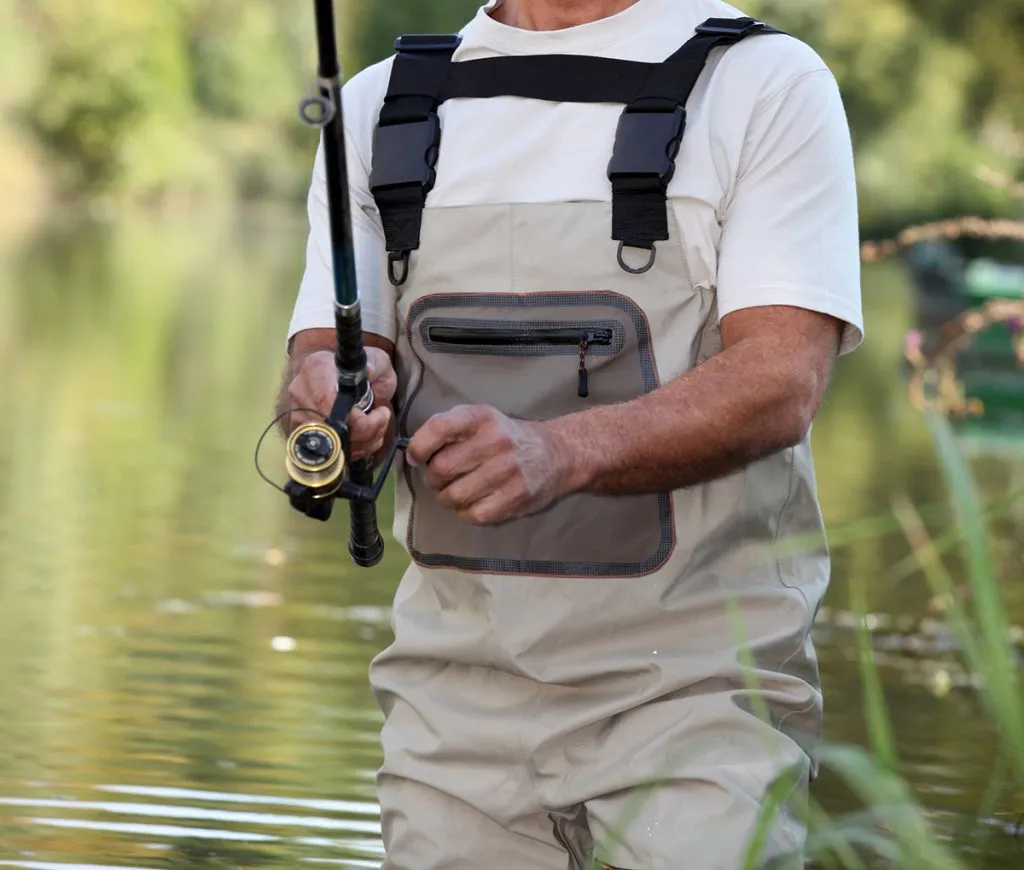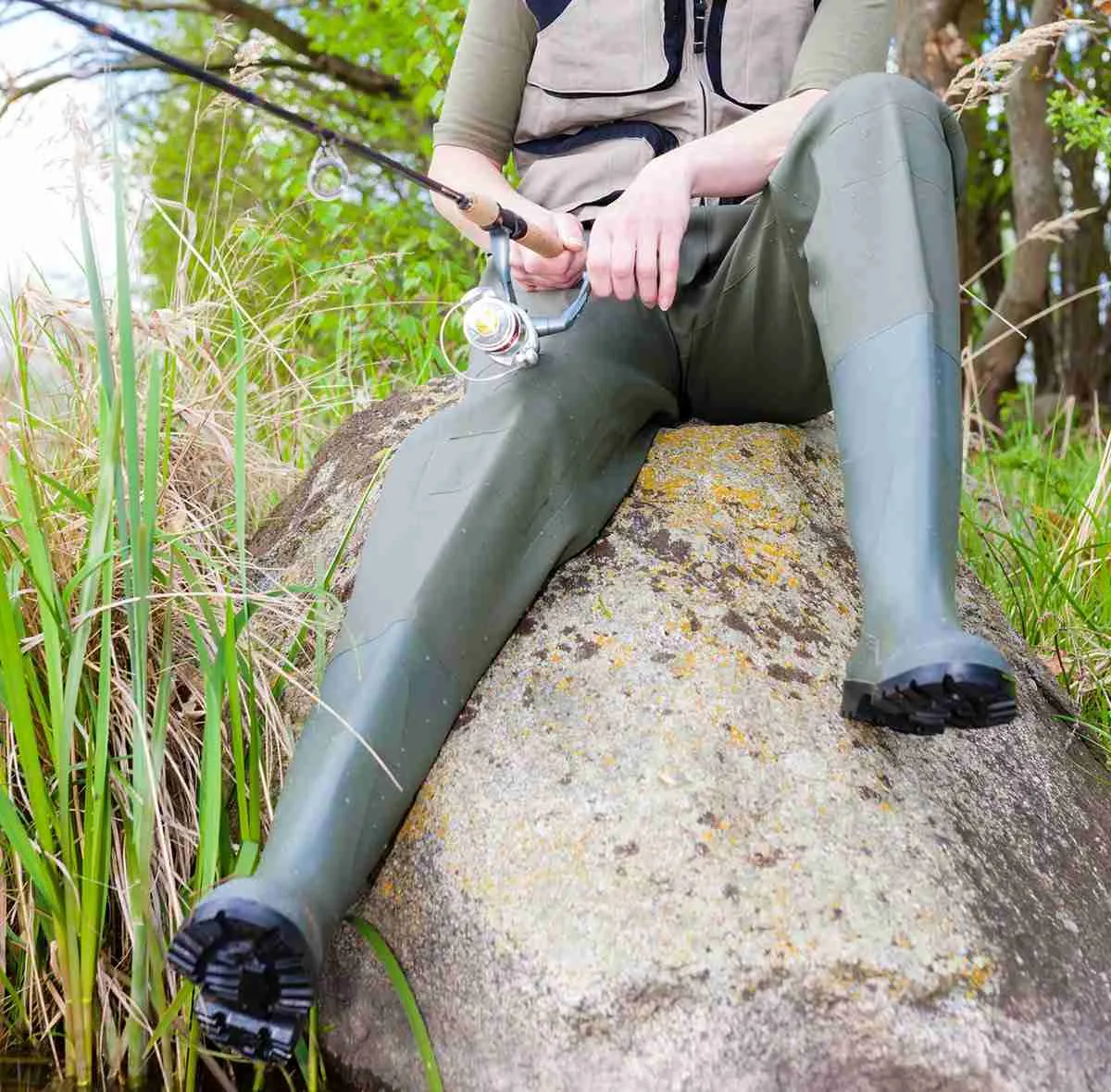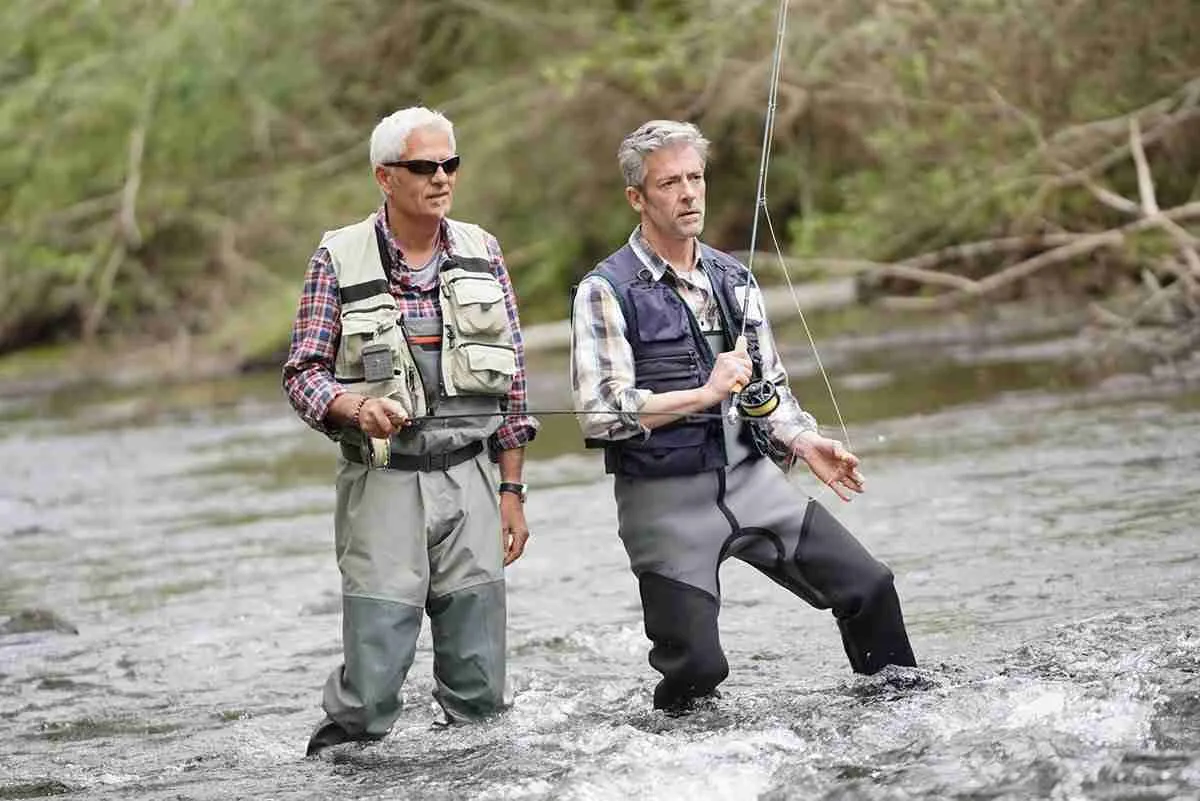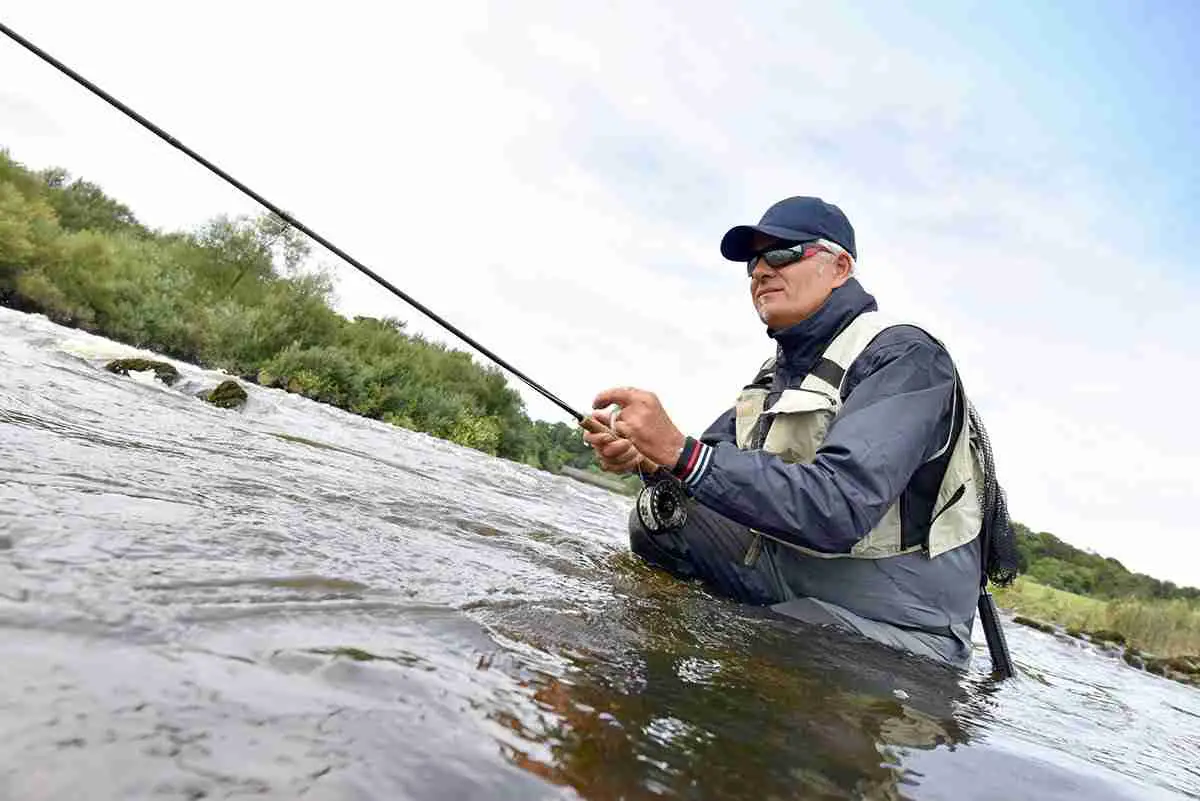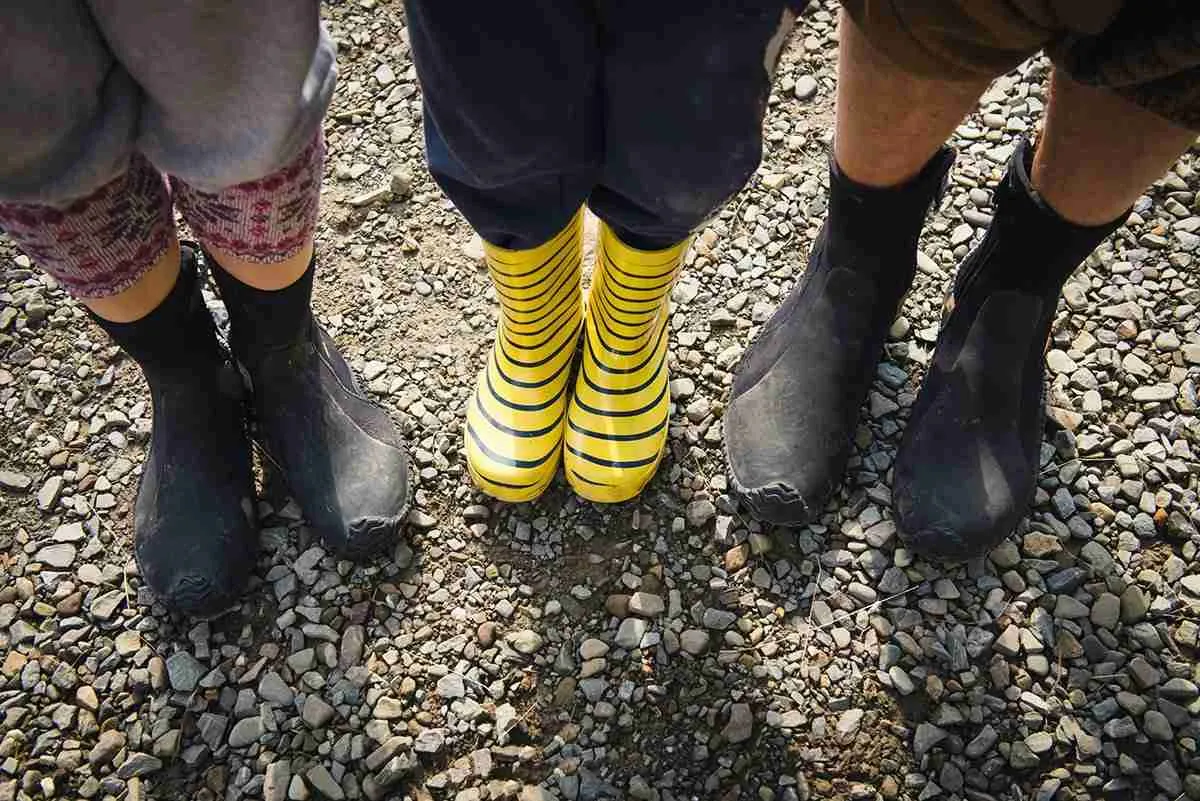Neoprene chest waders are excellent for those spending extended time in the water, as they’re durable and long-lasting. These chest waders are ideal for cold temperatures, deep or rough waters, and wading through swamps and marshes, even while fishing. Since neoprene chest waders can go in the water, does that mean they’re waterproof?
Neoprene chest waders are waterproof because they contain a neoprene rubber material. These waders vary in thickness ranging from 3 mm to 5 mm (0.11 to 0.19 inches), and they provide superior insulation, making them suitable for fishing in colder temperatures.
Neoprene waders are best for fishing in frigid temperatures, thanks to their durability and thick insulation. Their waterproof nature keeps your body dry, and their insulation helps keep you warm, so you can fish even when water levels reach your chest height. Keep reading to find out more.
Neoprene Chest Waders Are Waterproof
According to The Wading List, Neoprene chest waders contain tiny bubbles of nitrogen that account for much of its insulation. The thick rubber paired with the nitrogen bubbles results in a wader that provides superior insulation and is best for fishing in colder temperatures.
Neoprene is a naturally waterproof rubber material, so they’re completely waterproof. Because of neoprene chest waders’ waterproof nature, they don’t let any moisture in or out. So your body won’t get wet from the water, but if you sweat, it’ll accumulate in the waders, making them uncomfortable for fishing in warmer weather.
Because neoprene waders are composed of heavy materials, they’re best for fishing in cooler climates where you need to stay dry and won’t sweat as much.
Neoprene chest waders are typically thick — their thickness ranges from 3 mm to 5 mm (0.11 to 0.19 inches).
Neoprene Chest Wader Purposes
Neoprene chest waders are an excellent choice for those working in cold weather, ravines, rough waters, waters with swift currents, or exploring unfamiliar waters that might have sudden dips or drop-off points.
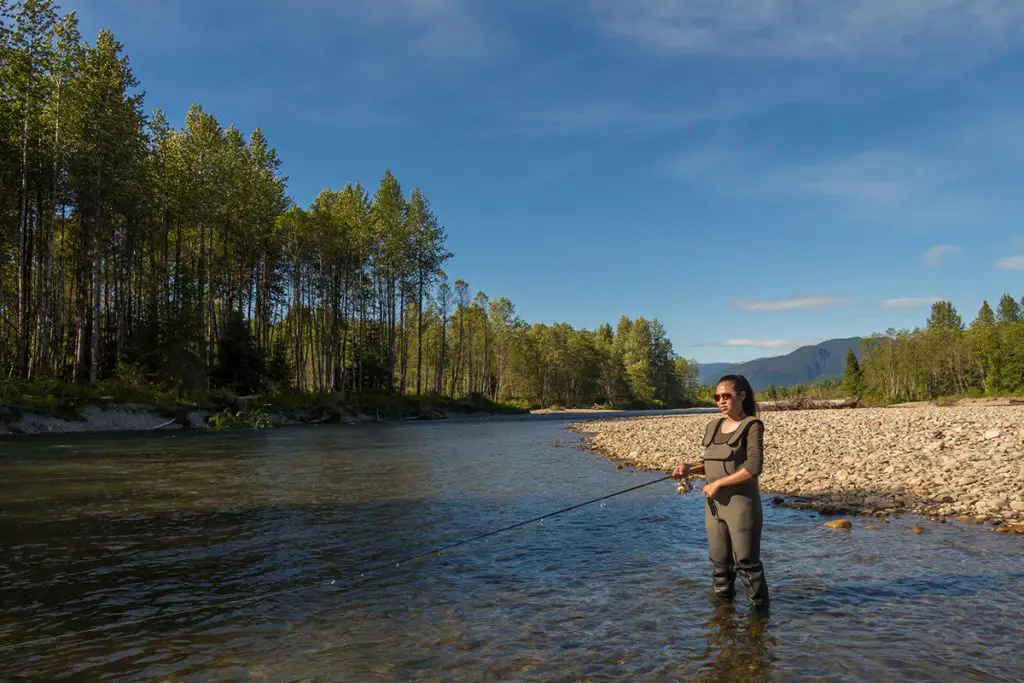
These Caddis Neoprene Bootfoot Waders are an excellent option for any wading situation you might encounter. They’re insulated 3.5 mm (0.13 inch) and equipped with warm pockets, knee pads, and thick boot insulation, ideal when wading deep waters or standing in cold water for prolonged amounts of time.
Because chest waders cover almost your entire body, they’re a great option if you’re working in deep waters. Neoprene chest waders come from highly durable materials, so they’re an excellent choice for fishing in rough waters. If you’re in deep waters, be sure to wear a wading belt so that your wader doesn’t flood.
Neoprene chest waders provide superior insulation due to their rubber nature and their nitrogen components. If you’re fishing in chilly waters or cold climates, a pair of neoprene chest waders will be excellent for keeping you warm and dry.
These waders vary in thickness. Generally, 3 mm (0.11 inch) neoprene chest waders are best for warmer climates or average fishing conditions. Waders with 5 mm (0.19 inch) thickness are best for colder days and harsher environments.
These chest waders are extremely useful and ideal for hunting ducks, geeks, or large aquatic birds. Because they’re durable and well-insulated, many hunters enjoy wearing them in marshes and swamps, where these birds typically live.
These Hisea Duck Hunting Waders from Amazon.com contain eight shell holders, hand warmers, and durable rubber boots, making them ideal for wading through marshes while duck hunting.
Wearing chest waders is suitable in these types of hunting scenarios where low-hanging branches and other intrusions are prevalent. A neoprene chest wader’s durable material will protect you from scratches and punctures.
How To Choose the Right Chest Waders
Fishing waders primarily come in three types: neoprene, breathable, and rubber. Neoprene and rubber waders get their name from their respectable components: neoprene and rubber.
Breathable waders contain nylon or polyester fabric with a waterproof component. Each one serves a different purpose according to your fishing needs, water conditions, and climate. It’s essential to choose the right wader so that you’re adequately equipped for your fishing journey.
Neoprene characteristics:
- Best for fishing in colder temperatures
- Made of thick material and optimal for best insulation
- Durable
- Can be comfortable and easy to move in, although some models can be restricting
- Best for swamps, marshes, shallow, or deep water
- Great for hunting waterfowl
Breathable characteristics:
- Best for fishing in warm or hot temperatures
- Made of nylon and polyester, and optimal for warmer days
- Not durable or suitable for rough waters
- Easy to move in
- Made from lightweight materials
- Prone to rips and tears
- Great for shallow to deep waters, so long as the waters are relatively calm
- Best for fly fishing
Rubber characteristics:
- Best for fishing in rough waters
- Made mostly of rubber
- Extremely strong and durable, and doesn’t tear easily, as they’re designed for rough waters and to survive wear and tear
- Best for shallow and rough waters
- Great for marshes, swamps, and trenches
Wader Footwear — Stockingfoot vs. Barefoot
Another thing you need to consider when purchasing a chest wader is the footing. Depending on the style and make of your wader, you might need to buy separate footwear. Some waders, like barefoot waders, already have the feet attached to them. Other wader styles, like stockingfoot waders, need different boots worn with them.
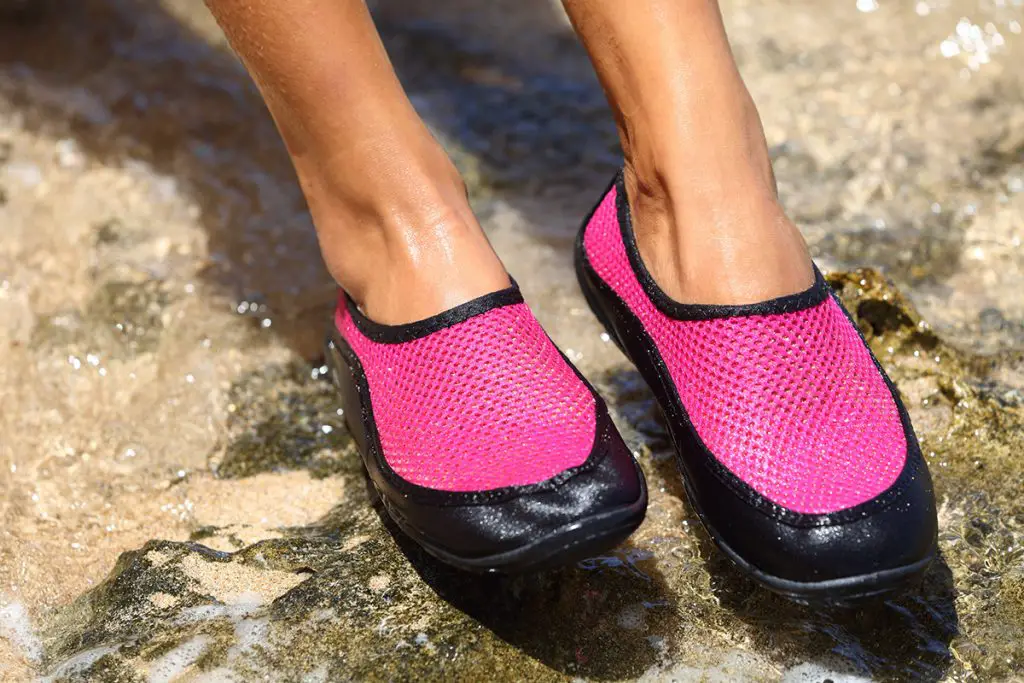
Some neoprene chest waders don’t have the boots attached to them and require separate neoprene wading boots. However, they’ll typically contain neoprene socks that keep your feet warm and dry.
You’ll have to purchase other wading boots so that you can wade safely and securely in the water. The wading boots provide traction and grip on slippery ground.
Avoid Neoprene Chest Waders in Hot or Warm Days
Neoprene chest waders provide optimal insulation and warmth, but they’re not breathable, and some models are constricting and challenging to move in. Neoprene waders aren’t recommended for warm or hot days because they’re heavy and don’t promote airflow. Thicker options will make some wading difficult or awkward.
Final Thoughts
Neoprene chest waders are best for people fishing in colder temperatures because of their thick insulation and durable materials. They vary in thickness, which means you have a higher chance of finding a wader that suits your needs. Neoprene waders are optimal for rough water, swamps, marshes, and frigid temperatures.
What To Read Next:
